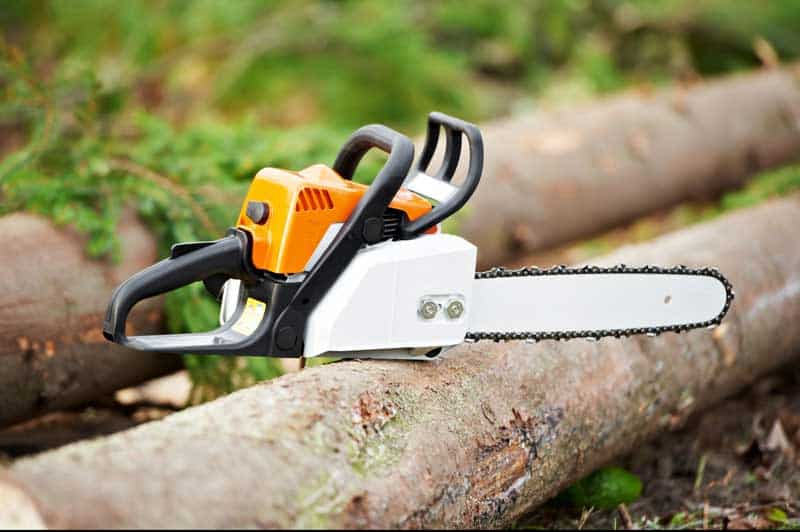
Chopping down trees is no walk in the park! If you’re a DIYer looking for guidance on safely cutting down trees, you’ve come to the right place. However, it’s important to know that if you’ve never cut one down or worse, have never even used a chainsaw, you should seek the help of someone who knows what they’re doing. If you’re adamant on cutting down timber by yourself, then ensure you take baby steps by working on smaller wood. If you’re confident that you can hit up your backyard and chop those babies down on your own, then here’s what you’ll need:
When doing any sort of manual labour, especially when working with a chainsaw, following necessary safety measures and precautions is absolutely crucial. By using a logger’s helmet, earmuffs, safety glasses, and Kevlar pant covers, you’ll reduce the risk of harming yourself.
Before chopping down the wood, assess the situation for possible dangers. Is the subject overwhelmingly large? Is it leaning in a questionable direction? Do you notice hydro lines surrounding the branches? These are all recipes for disaster and in cases such as these, calling a professional is your safest bet.
Large trunks can sometimes fall in unpredictable directions. With that in mind, planning a safe escape when cutting them down is an absolute must. It’s always best to be one step ahead of the falling wood, so if you can prepare for multiple escape routes in different directions, that’s even better.
Be aware of notches. A proper notch has an angle of 30% on the bottom, 60% on the top and about 1/5 the width of the trunk. The uncut tree between the felling cut and the notch is what gives control over the falling timber. Why is this important to know? Because it will fall in the notch’s direction. The felling cut on the opposite side will cut through but not all the way to the notch and if you cut too far, you’re in danger of losing control. Proper notch planning is exceptionally important for your own safety.
The felling zone is the distance reached when the timber falls. It can be measured based around the tree’s height. Using an eyeball method is not an advisable way to measure as they’re often much taller than we think. So how in the world do you take a measurement? First, you’ll want to stand at a distance you estimate is the same height as the tree. Holding an axe at arm’s length, point to the shaft’s middle. Move backwards or forwards and with one eye closed, look to see when the top of the axe matches the height and the bottom matches the base. This brings you to the edge of the felling zone. By adding a few more feet, you’re at a safe distance for accurate measurement.
To prepare for your chop, you’ll need to cut a notch to keep your cutting line open while avoiding a pinched chainsaw. First, cut the notch on the top and then on the bottom. If you’ve cut correctly, the notch should fall out smoothly. Next is the most crucial part: cutting down the tree itself! Using your chainsaw, cut through the wood. Using the felling wedges is vital as your chainsaw enters deeper into the trunk. As the felling gets deeper, you’ll notice your tree beginning to fall. Before making the last felling cut, grab a buddy to keep an eye open for any unpredictable changes.
Obviously, safely cutting down a tree is a tough and sometimes, scary job. If you need a professional opinion and direct advice on how to cut down a trunk, talk to Lloyd! There’s no obligation and he is more than happy to lend out his knowledge on chopping down wood and of course, inspection services.
Need the C4U Eyes? Lloyd doesn’t break the rules for anyone and as a leading chief home inspector in BC, that means he follows industry requirements, government regulations and licensing codes of conduct to the letter. He offers unbiased, ethical and professional home inspections and building consultation services. Contact Lloyd from C4U Inspections today and he’ll be happy to help you out.